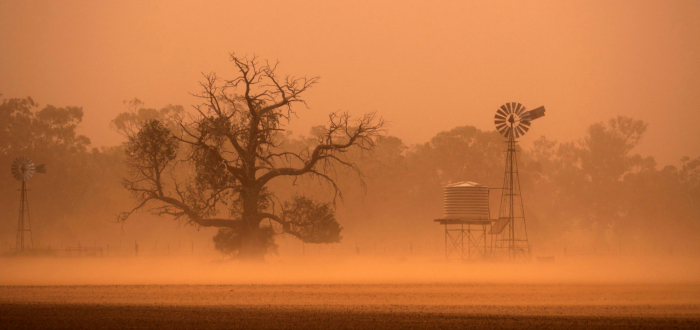A variable climate
Australia is a vast country, stretching 3,680 kilometres from 10° 41' 21" S at Cape York to the southern tip of Tasmania at 43° 38' 40" S.
Across this large area are many different ecosystems, climatic conditions and climate extremes, including sub-zero temperatures in the mountains and temperatures up to 50 °C in the desert.
Extreme weather and climate events include cold snaps, heatwaves, floods, dry spells, heavy rainfall, storms and drought.
Under a changing climate, these extremes are expected to change.
Predicted changes
Australia has been known as a land of ‘droughts and flooding rains’, but scientists have found that in recent decades these extreme events are increasing due to climate change, and this will continue.
Australia is predicted to experience higher temperatures.
As the average temperature increases, extreme heat days will become hotter and periods of extreme cold will not be as cold.
How quickly, and by how much, these extremes change depends on how much we reduce greenhouse gas emissions. If we don’t reduce emissions, then by 2100 extreme heat days that happened on average once every 20 years could occur every one to two years.
As well as hot days occurring more often, they also could be up to 4.8°C hotter, depending on future greenhouse emissions.
In southern Australia, cool-season rainfall is expected to decrease, while rainfall may increase in northern parts.
Extreme events such as tropical cyclones are expected to decrease in frequency but when they do occur, they are expected to be more severe.
Areas of Australia prone to drought may spend more time in drought.
A variable climate
Australia is a vast country, stretching 3,680 kilometres from 10° 41' 21" S at Cape York to the southern tip of Tasmania at 43° 38' 40" S.
Across this large area are many different ecosystems, climatic conditions and climate extremes, including sub-zero temperatures in the mountains and temperatures up to 50 °C in the desert.
Extreme weather and climate events include cold snaps, heatwaves, floods, dry spells, heavy rainfall, storms and drought.
Under a changing climate, these extremes are expected to change.
Predicted changes
Australia has been known as a land of ‘droughts and flooding rains’, but scientists have found that in recent decades these extreme events are increasing due to climate change, and this will continue.
Australia is predicted to experience higher temperatures.
As the average temperature increases, extreme heat days will become hotter and periods of extreme cold will not be as cold.
How quickly, and by how much, these extremes change depends on how much we reduce greenhouse gas emissions. If we don’t reduce emissions, then by 2100 extreme heat days that happened on average once every 20 years could occur every one to two years.
As well as hot days occurring more often, they also could be up to 4.8°C hotter, depending on future greenhouse emissions.
In southern Australia, cool-season rainfall is expected to decrease, while rainfall may increase in northern parts.
Extreme events such as tropical cyclones are expected to decrease in frequency but when they do occur, they are expected to be more severe.
Areas of Australia prone to drought may spend more time in drought.

